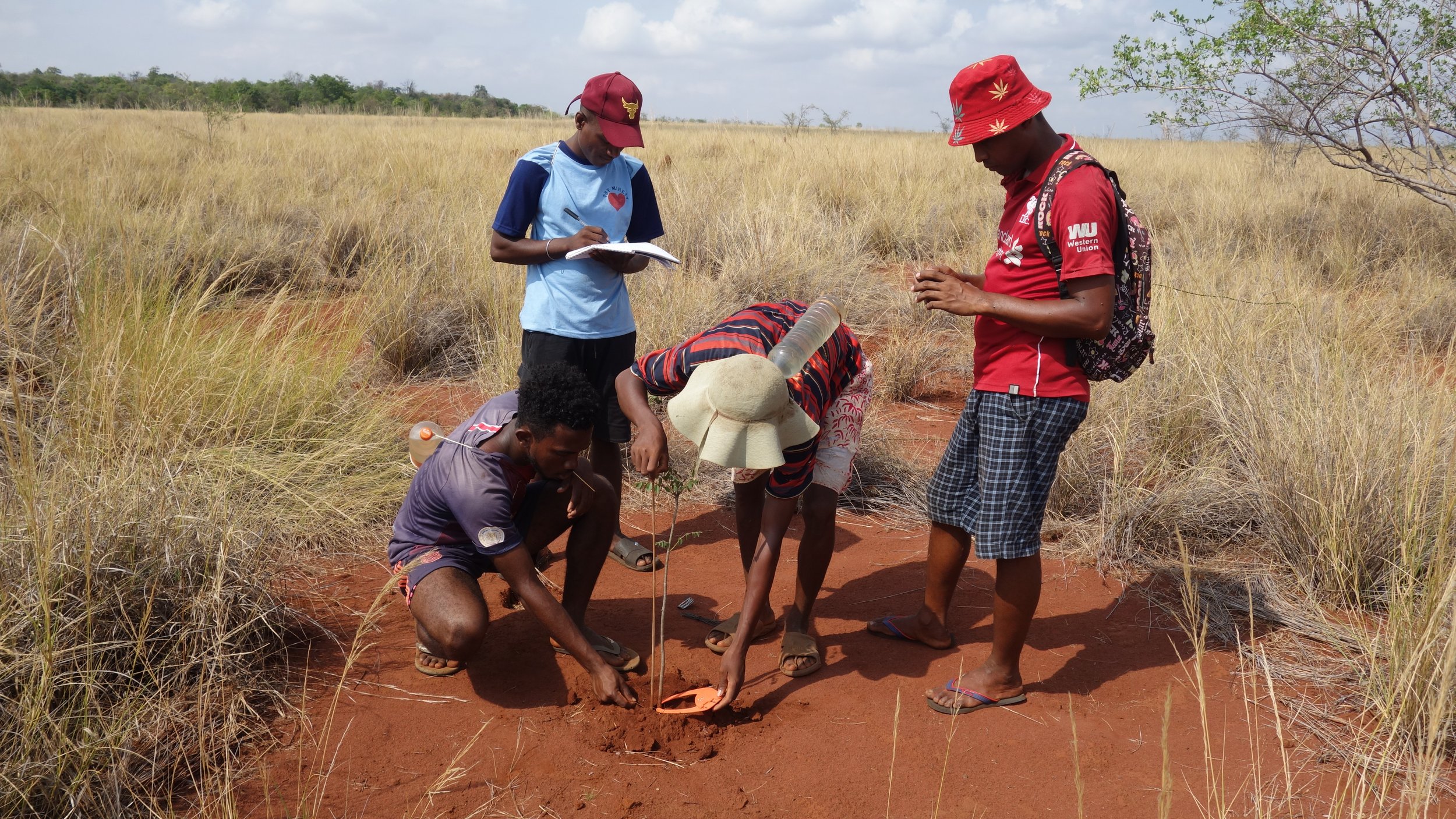From Trees to Forest
/Planting trees and restoring endangered forest involves more than simply putting trees into the ground. Ask any of Planet Madagascar’s staff working to restore forest in Ankarafantsika National Park, northwest Madagascar. These hard-working individuals—members of local communities near the park—would tell you that there are numerous considerations and many details that must be accounted for. To ensure that seedlings germinate and live to become forest, our teams work to plant native species grown from seeds that were hand collected into plastic growing bags. They produce compost to help the seedlings grow. They carefully put ID tags on each seedling when it is planted and mark its location with a handheld GPS so that we can track its progress.
What’s the reason for this diligence?
Some of the world’s richest tropical dry deciduous forest are found in western Madagascar but unfortunately, because of an increasing need for resources, human activities have destroyed the majority of these forests. In fact, there are only five blocks of tropical dry deciduous forest larger than 50,000 hectares left in Madagascar, and one of these is Ankarafantsika National Park. The Lemur Conservation Strategy outlines habitat loss and fragmentation as “the most important factor driving historic losses for lemurs.” Ankarafantsika is home to eight lemur species, of which four are Vulnerable, one Endangered, and two Critically Endangered.
Our forest restoration project is funded by IUCN Save Our Species and takes place in an 8,000 hectare management zone within Ankarafantsika National Park. Our teams are working to protect and expand endangered lemur habitat and contribute to improving the livelihoods for local communities living in conjunction with the lemurs and the forest. We employ residents to collect, process, and nuture seeds in 5 nurseries. We produce our own biological compost using green leaves, zebu (cattle) feces, hay, and microorganism activators. Team members tend to the seedlings until they reach 15 to 30 centimeters, at which point the teams transport them to the plantation zone for planting.
Local Malagasy community members are involved at all levels and stages of our projects from conception through implementation. We consult with key stakeholders at the outset of all our projects to ensure that our conservation actions are appropriate and beneficial for all. The community members who are involved in our projects receive an ongoing salary and training opportunities. Our teams are proud of the work that they are doing to benefit their home and the local wildlife.
Thanks to the support from IUCN Save Our Species and the efforts of our project team, we have successfully planted 67,000 trees made up of 15 different species, restoring and maintaining 75 hectares of forest in Ankarafantsika.



